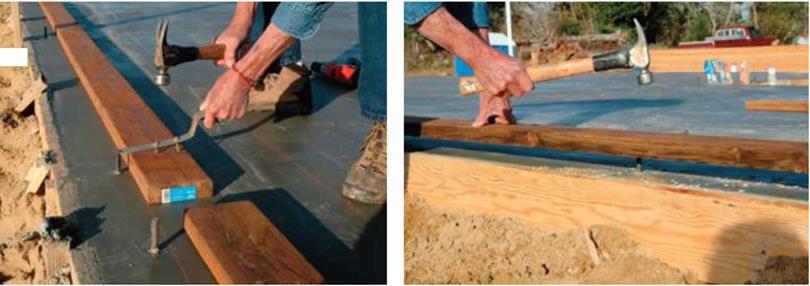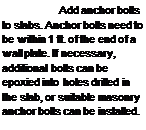CARRYING LUMBER
Framing lumber can be heavy. A 2×4 stud isn’t a big deal, but a wet, 16-ft. 2×12 sure is—and there are many boards of that heft even in a small house. Don’t carry lumber by holding the board at your waist; this puts undue strain on your elbows and lower back. Instead, grab a long, heavy board at its balance point and, in one fluid motion, lift and flip it gently onto your shoulder. With your entire body helping absorb and distribute the weight, the load is much easier to carry.
|
|
|
|
|
|
|
|



Plating on a concrete slab and around plumbing
Remember to use treated wood when working on concrete. Untreated wood placed next to a slab is an open invitation for hungry termites to move in. When working on a slab with anchor bolts, use an anchor-bolt marker to locate the holes in exterior wall plates (see p. 58 for more on anchor bolts). With a bit of practice, you can also mark the bolt holes by setting the plate di
rectly on the bolts. Just sight down and align the plate edge with the chalkline, then hit the plate with a hammer directly over the bolts.
After the holes are drilled, you can fit the bottom plate on the anchor bolts and nail the top plate along the bottom plate’s outside edge (see the illustration on the facing page). It can also be toenailed on edge to the top of the top plate.
If you encounter plumbing pipes in the walls, cut the bottom plate to fit around them.






Leave a reply